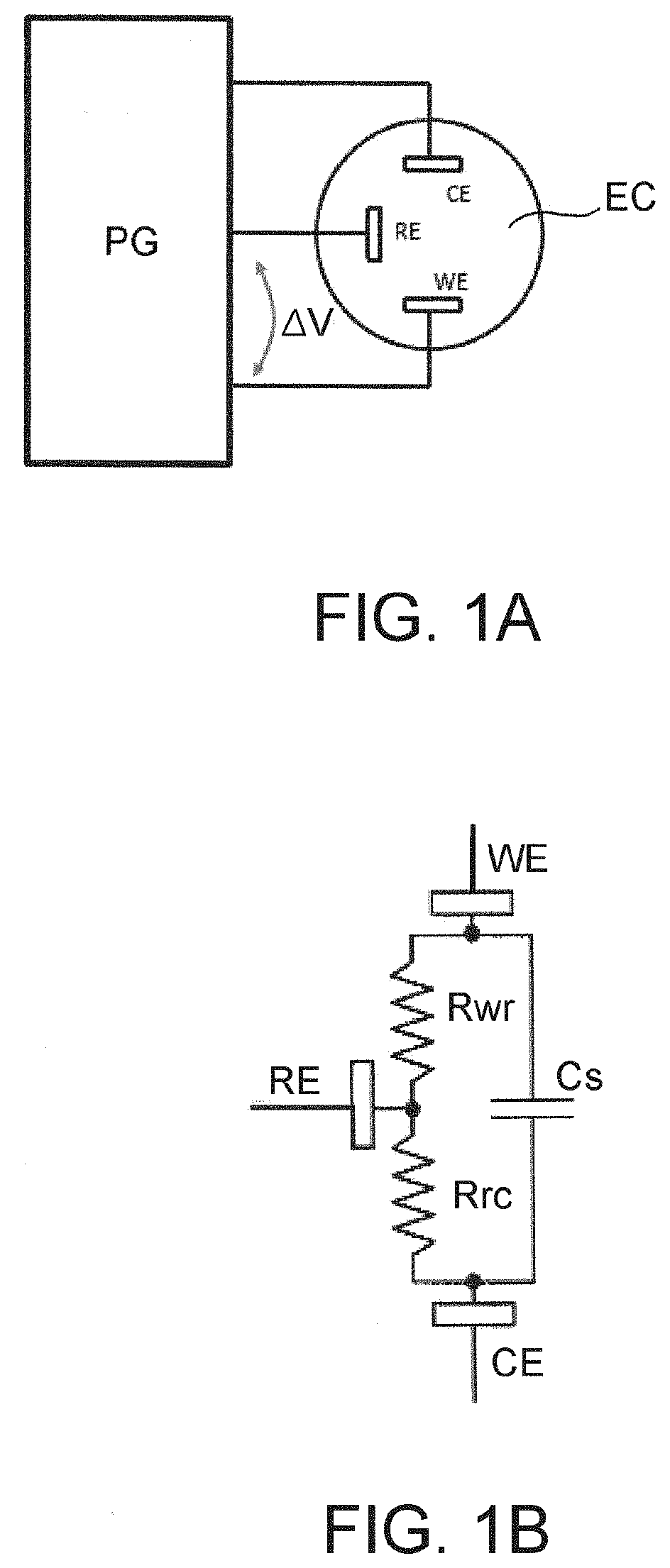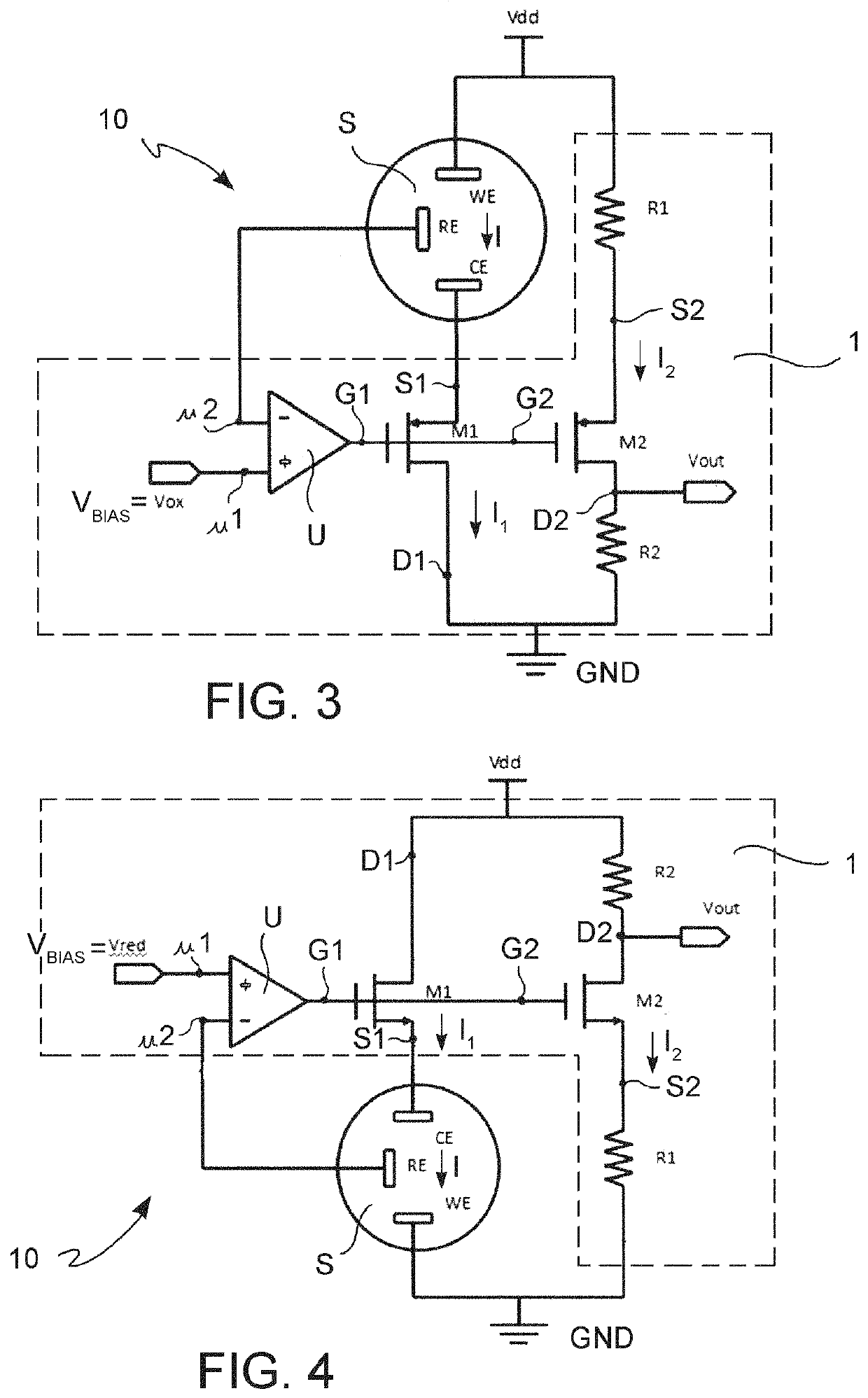Interface electronic device for reading an output signal and for controlling and conditioning a three-electrodes amperometric sensor
a technology of amperometric sensor and interface electronic device, which is applied in the field of devices, can solve the problems of high energy consumption, unstable voltage on the working electrode, oscillation and instability of the circuit,
- Summary
- Abstract
- Description
- Claims
- Application Information
AI Technical Summary
Benefits of technology
Problems solved by technology
Method used
Image
Examples
Embodiment Construction
[0033]With reference to FIGS. 3 and 4, an electronic device 1 for reading an output signal and controlling a three-electrode electrochemical amperometric sensor S is now described.
[0034]In FIGS. 3 and 4, the device 1 is enclosed by a dashed line, and interacts with the larger system for measuring an electrolyte concentration 10, which also comprises, in addition to the device 1, also the sensor S which is controlled and conditioned by the device 1.
[0035]In particular, but not limited to, the definition of “electronic device” applies herein to a circuit structure capable of reading the output signal and controlling the aforesaid amperometric sensor.
[0036]It should be noted that such a circuit structure may be implemented by means of the most diverse implementation options, in terms of integrated or discrete technology, and in terms of partition of the device components (which may be non-integrated, or integrated with each other, or partly integrated with the sensor and partly integra...
PUM
 Login to View More
Login to View More Abstract
Description
Claims
Application Information
 Login to View More
Login to View More - R&D
- Intellectual Property
- Life Sciences
- Materials
- Tech Scout
- Unparalleled Data Quality
- Higher Quality Content
- 60% Fewer Hallucinations
Browse by: Latest US Patents, China's latest patents, Technical Efficacy Thesaurus, Application Domain, Technology Topic, Popular Technical Reports.
© 2025 PatSnap. All rights reserved.Legal|Privacy policy|Modern Slavery Act Transparency Statement|Sitemap|About US| Contact US: help@patsnap.com



